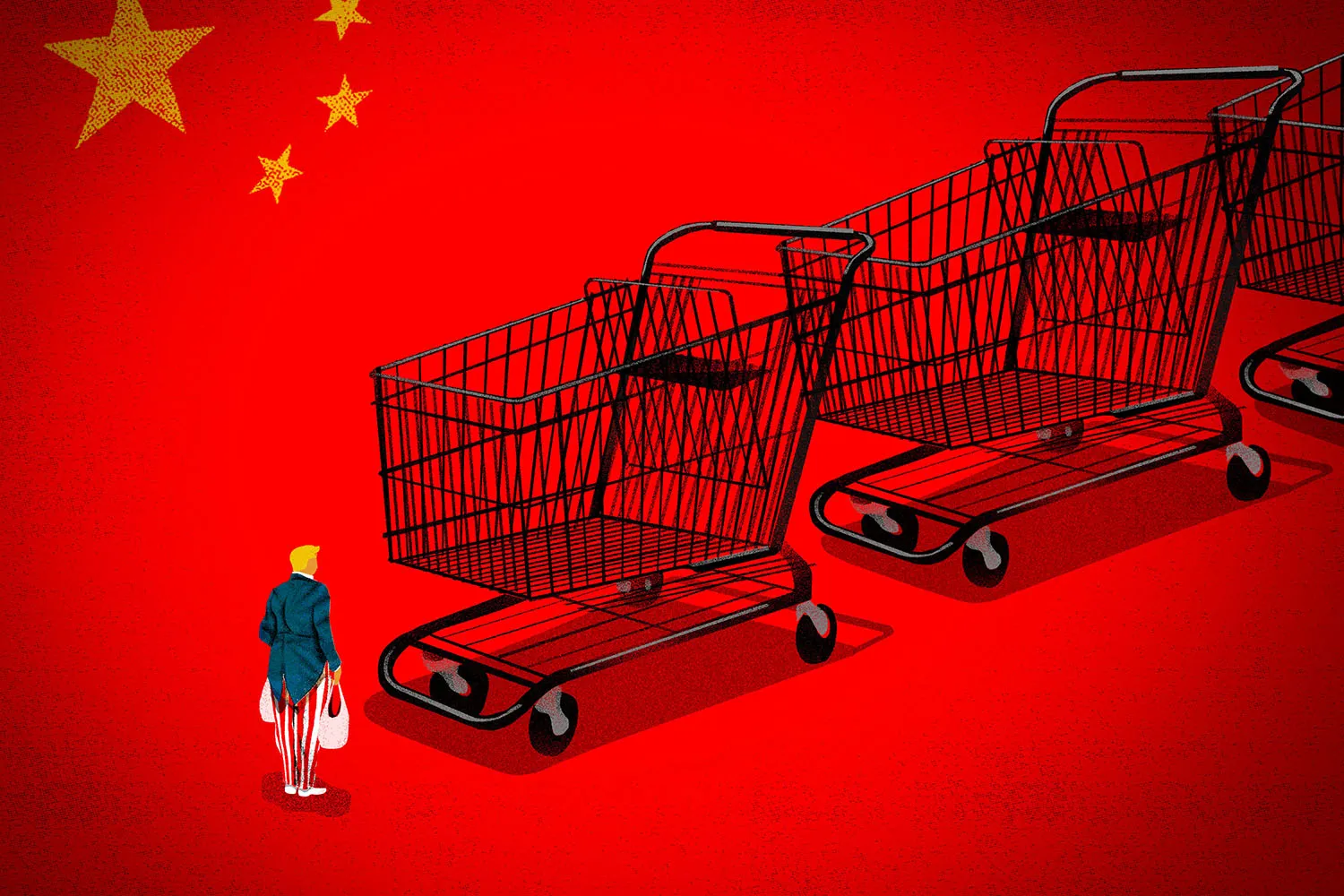China has become an integral yet focal player in the e-commerce industry. Over the past few years, the advancement in technology and the inception of AI have driven this industry to new heights. China doesn’t hesitate to take its e-commerce industry above par and stand as a dominant player. But how?
The driving force behind its success consists of many legitimate and proactive practices. It is critical to note here that Chinese e-commerce provides new business models, a better customer experience, and an untapped audience. But how Chinese e-commerce blossomed—let’s understand it to its core—how China has become a global e-commerce giant.
Table of Contents
China’s Ecommerce Landscape: A Digital Revolution
The e-commerce industry in China has evolved from zero to a global powerhouse in a short span of time. The revolution has undergone a significant transformation over the past few years due to a combination of various factors. Some major factors that have contributed to the success of this industry include:
Large Population
China is one of the most populous countries in this region. The large population is one of the key factors that has contributed to the growth of this sector in China. More people means increased demand for goods and services.
Fast Internet Penetration
A rapid penetration of the internet and widespread use of smartphones among a vast population have enabled a rise in online shopping.
Big International Tech Companies
The companies at the center of boosting e-commerce by way of their platforms and services are the leading tech giants from China, including Alibaba, JD.com, and Tencent.
Government support
The Chinese government has been very supportive of the development of e-commerce by providing a wide array of favorable policies and infrastructure.
In 2024, people are expected to spend about $1,469 billion on e-commerce.
This number is expected to keep growing by about 10% every year until 2029.
The Evolution of Ecommerce In China
Let’s take a look at:
Early Pioneers (Late 1990s)
The Chinese e-commerce market is pioneered by companies like Alibaba and JD.com, which focused on B2B transactions and online marketplaces.
Rise of Mobile Commerce (Early 2010s)
It was with the advent of mobile internet and an increase in the number of smartphones in circulation that mobile commerce spiked. Chinese developed innovative mobile payment solutions like Alipay and WeChat that boosted online shopping.
Social Commerce and Live Streaming (mid-2010s)
Social media gradually transformed, mainly through WeChat and Weibo, into another channel supporting e-commerce by, for example, social sharing, group buying, and live streaming of shop experiences.
Omnichannel Retail (late 2010s)
Chinese e-commerce companies have now begun creating an almost seamless shopping experience for customers through integration of online and offline channels that blur the physical and digitized stores.
Cross-Border E-commerce (2020s)
The Chinese e-commerce platform has grown from the local market to the global market, offering a wide range of products to customers worldwide.
Mobile-First Approach
Chinese customers rely heavily on mobile devices for the majority of their online purchases, making this platform essential.
Social Integration
Social media drives e-commerce through product discovery, building trust, and sharing.
Payment Innovations
Chinese companies have devised innovative methods of payment. It includes QR codes and face recognition, making transactions faster and safer.
Client-Centric Focus
Chinese e-commerce companies prioritize consumer satisfaction by providing exceptional service, tailored suggestions, and convenient returns.

Top Reasons Why China is Dominating Ecommerce Industry
It’s only a decade ago that China stood as an also-ran in global e-commerce competition. Today, it stands as the world’s biggest shopping barn, meaning over 40% of all online sales are made right here. In a word, China does more e-commerce business than the United States, the United Kingdom, France, Germany, and Japan combined.
Surge in Internet Usage
What has been the reason for China’s e-commerce success? Well, one of the big reasons is that so many people use the internet. In 2018 alone, 30 million people in China went online for the first time. Now, more than 800 million people use the internet in China—more than the entire populations of the United States, Indonesia, and Brazil combined.
No wonder, with such a massive population that has turned to the internet, e-commerce too has become a serious business in China. Now, it is not at all a problem to shop online for apparel and gadgets or food and furniture. Moreover, companies hailing from China have discovered newer and more innovative ways to make one’s online shopping experience worthwhile.
Rising Income
China has only been getting richer and more resourceful over the past few years. By this, we mean they have enough money after paying off their necessary household and daily expenses. The reason we all know is quite evident: its growing and flourishing economy.
When people have more disposable income, it enables them to spend more on online shopping. This has boosted China’s e-commerce industry.
Having more money and rising income is another evident reason why China is dominating the e-commerce industry. The Chinese encourage convenient ways of shopping, and we know that online shopping is affordable and cheaper.
As the economy continues to improve, the citizens of China have begun to spend more money on online shopping. So, this has contributed to the rise of the Chinese e-commerce industry, which has become very fast.
Smartphone Access: The Gateway to Internet
In China, almost everyone owns a smartphone. In fact, more than 90% of users use their smartphones to go online or do shopping. This is more than twice the combined number of people who use the internet in the US and UK.
Not only do people in China use their smartphones to shop online, but they use them for multiple reasons, including making online transactions. Back in the early 2010s, only 20% of people used to make online transactions while using their phones. However, the number has increased dramatically in the 2020s and reached above 70%. This is a massive jump!
For instance, the size of mobile payments in China can be best elaborated by Alibaba Singles Day. The event, as the name suggests, happens yearly and is a big shopping event in China.
In 2017, out of all the purchases made during Alibaba Singles Day, 90% were made using mobile phones. This goes on to prove just how key mobile payments are to the Chinese e-commerce industry.
The Government’s Role in China’s E-commerce Success
The Chinese government helped the e-commerce industry in its growth. For example, in 2015, the Internet Plus action plan aimed to integrate the Internet into conventional industries, including manufacturing and agriculture. Backed by digital technologies, this sets the proper environment for the success of an e-commerce business.
The government has played an important role in shaping China’s e-commerce. Here is how:
Helpful Policies
The government provided the necessary helping policies with regard to tax incentives and reduced regulatory burdens that gave impetus to the growth of e-commerce.
Infrastructure Building
It invested massively in building an infrastructure capable of sustaining e-commerce. This ranges from broadband networks through logistic facilities to payment systems. Government digital literacy initiatives have also led to the common use of e-commerce in China.
It has also been very instrumental in digital literacy programs geared at educating people on how to shop online and use technology, thereby expanding its consumer base.
Facilitation of Cross-Border E-Commerce
The facilitation and simplification of customs procedures and the reduction of trade barriers by the government stimulate cross-border e-commerce and help tie Chinese businesses to international markets.
Protection of intellectual property
The government has enhanced the protection of intellectual property rights in the interests of e-commerce businesses and innovations.
These government policies have hence been very conducive to the growth of e-commerce businesses in the environment, thereby propelling China to international leadership in that area.
Adoption of Modern Technology
China has been at the forefront of using modern technology to power its e-commerce industry. Some key technologies that are powering this revolution can be viewed as follows:
Artificial Intelligence (AI)
AI changed e-commerce in China with respect to the following aspects:
Personalization of Recommendations: AI algorithms analyze customer data to suggest products tailored to individual tastes and preferences.
Better Customer Service: AI-driven chatbots and virtual assistants still help deal with customers instantly.
Logistic Optimization: AI optimizes related aspects such as route and shipping cost reduction and inventory management.
Big Data
Analyzing big data has provided e-commerce businesses with several insights into Chinese consumer behavior in order to perform the following:
Understanding Customer Preferences: Through the analysis of huge piles of data, trends can be spotted based on which products are offered to customers.
Improving Marketing Campaigns: Better target marketing efforts and personalize promotions.
Optimize pricing: Through the data, businesses can set competitive prices that ensure they maximize their profits.
The Internet of Things (IoT)
IoT has been at the forefront of changing supply chain management and logistics in China through the following steps:
Tracking products: IoT devices trace products from their source to delivery, thereby enabling efficient and effective delivery while minimizing losses.
Optimizing inventory: IoT sensors track the inventory levels to ensure that when they reach a certain threshold, an order is placed for more stock.
Enhanced warehouse management: Picking, packing, and shipping are automated using IoT-enabled systems. Only blockchain enhances such other technologies, and together with cloud computing, these have gone a long way to making China a success story.
Chinese businesses have been at the forefront of embracing innovation to power up technology, getting ahead of the curve to deliver very great experiences for customers.

Big Ecommerce Players in China
Prepare to dig into the world of China’s leading e-commerce companies. Whether you are an investor seeking an opportunity, a business expert trying to broaden your horizons, or simply an e-commerce enthusiast, this information will be valuable.
The Dominating Duo: Alibaba and JD.com
For Chinese e-commerce giants, Alibaba and JD.com take the lead. The following giant actors have been able to carve out extraordinary niches for themselves.
Alibaba: King of the Ecosystem
Alibaba is not an easy one to compete with. With their quite unique business model, way beyond simple sales, they really charmed this market. What Alibaba does is create an ecosystem that links traders, consumers, and service providers. In this interwoven network, it entrenches collaboration and empowers varied players across the e-commerce landscape.
JD.com: Building Trust with Speed and Quality
However, JD.com has won extreme popularity by focusing on authentic products and instant delivery. A focus on authenticity and fast service helped a lot in improving customer trust levels and satisfaction. Thus, JD.com succeeded in building a reputation for reliability and convenience.

Amplify Your Ecommerce Efforts With Us
The boom in the e-commerce market in China is driven by a massive population, increasing incomes, technological development, and government support. These trends are captured by the leading e-commerce firms, such as Alibaba and JD.com, that have set the industry landscape in the country.
Want to tap into the vast potential of the Chinese e-commerce market? EvolveDash will help you build up a successful online store that caters to your market needs. Contact us today for more information about our services in e-commerce website development.
FAQs
- What are the biggest challenges facing China’s e-commerce market today?
Issues like data privacy, counterfeit products, and market saturation are growing concerns.
- How do logistics companies in China support rapid e-commerce growth?
Advanced warehousing, automated fulfillment, and last-mile delivery services have scaled rapidly alongside e-commerce.
- What role does sustainability play in China’s e-commerce practices?
Chinese platforms are gradually introducing green logistics, recyclable packaging, and eco-conscious campaigns.
- How does China’s e-commerce influence global online shopping trends?
China’s innovations in live-stream commerce, mobile payments, and social shopping are now being adopted worldwide.
- Are rural areas in China also experiencing e-commerce growth?
Yes — government programs and mobile infrastructure have helped bridge the urban-rural digital divide.



















